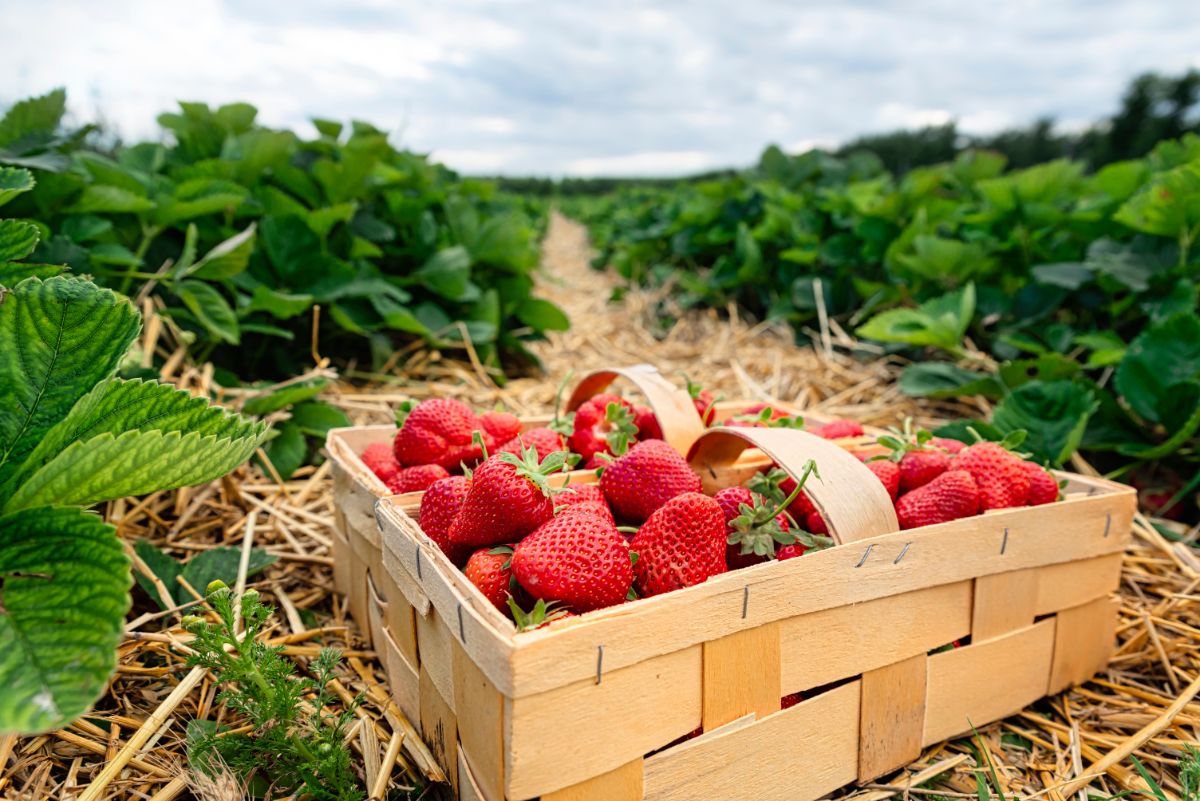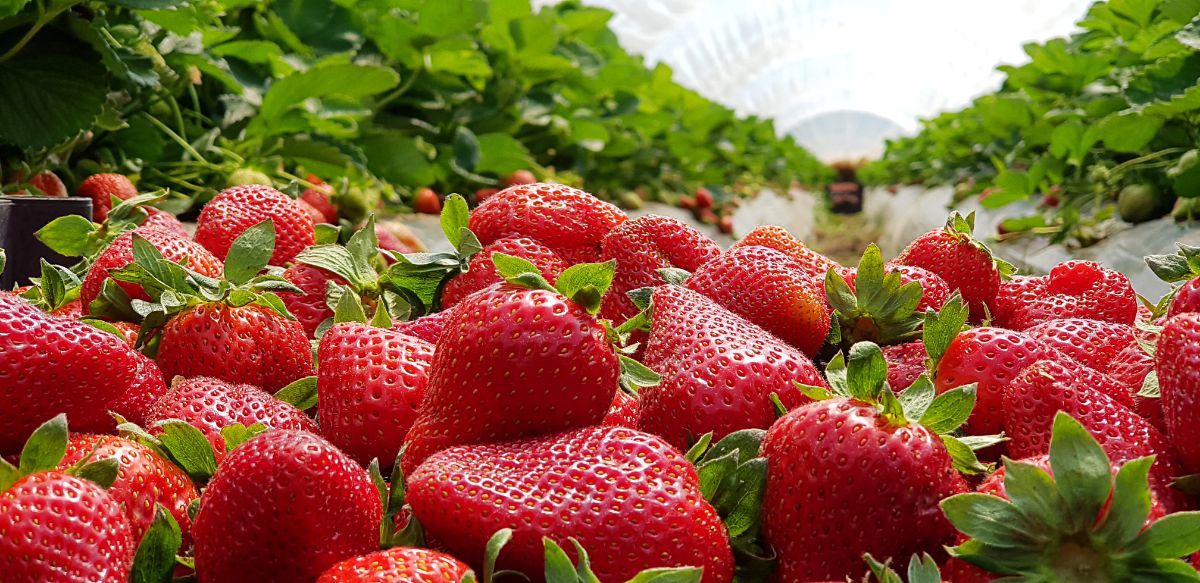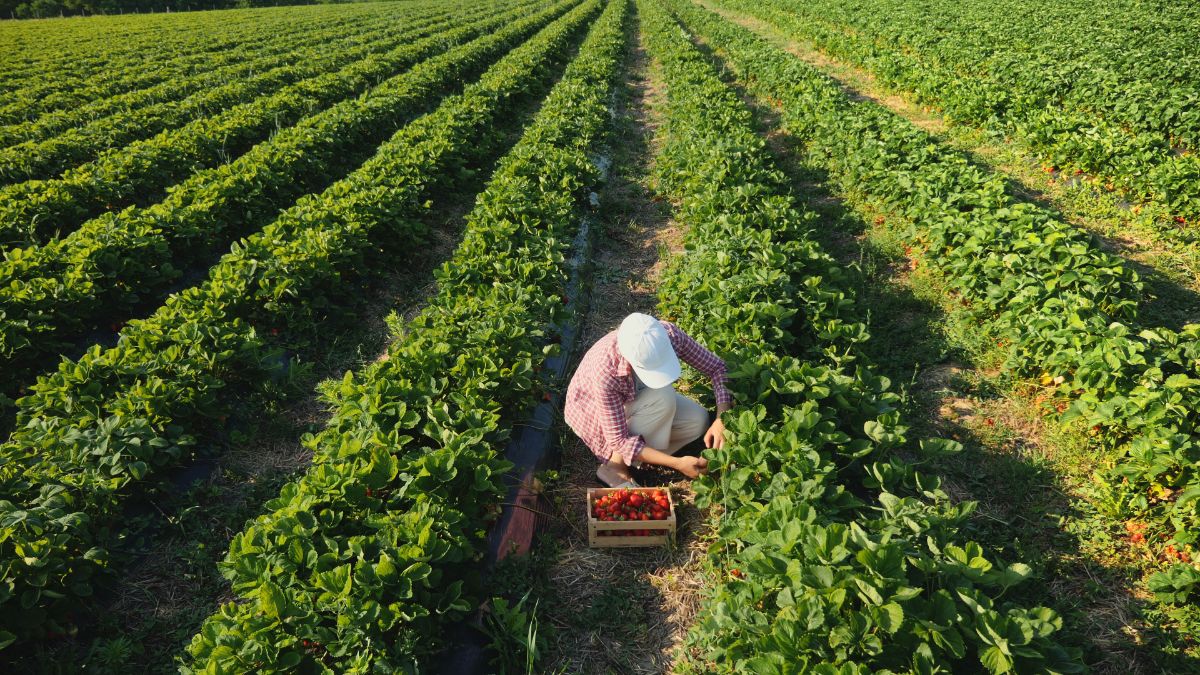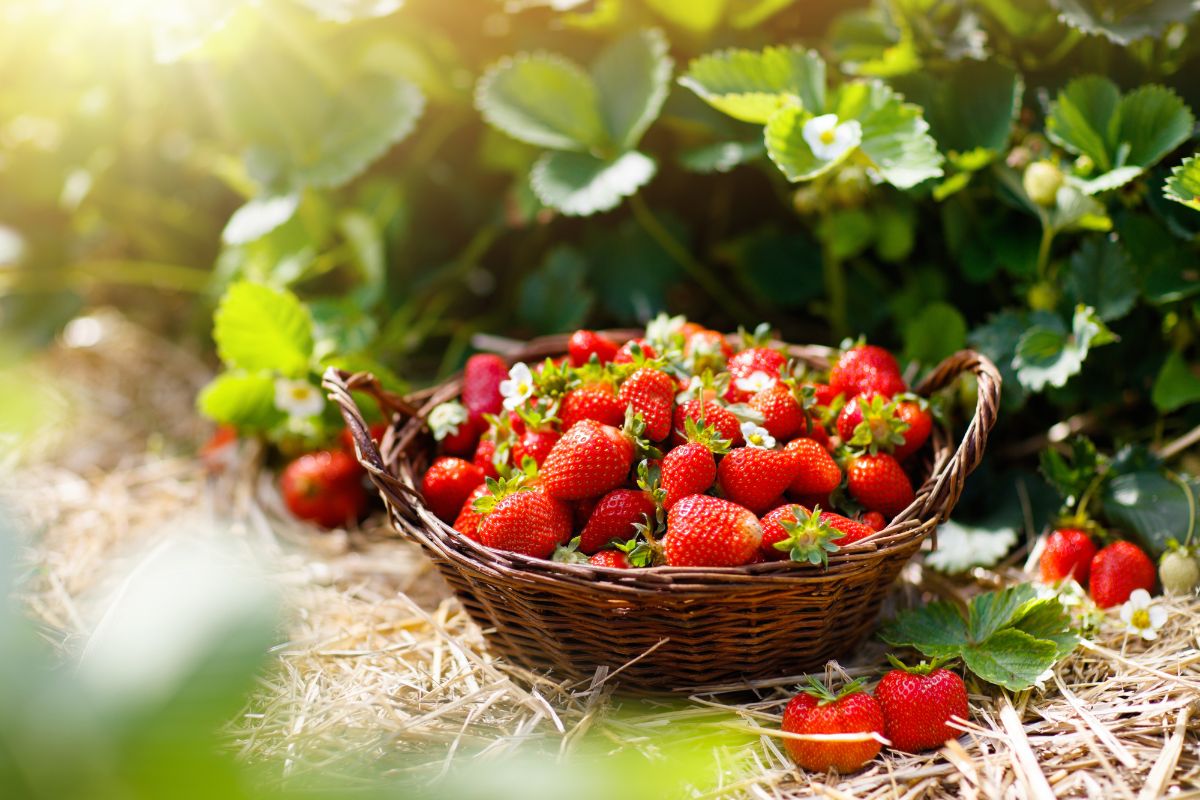Although strawberries have been at the pinnacle of the produce pyramid for decades, their popularity continues to grow. Unless a strawberry allergy forces a saddened consumer away from these bright red edibles, they are usually the first to vanish from fruit trays across the globe. Strawberries are delicious, there’s no doubt about that, but they have gotten a bad reputation of late. Conventional growing methods use fumigants, chemicals, and other methods to maximize production and profits. But, more and more people are becoming disillusioned and distrustful of conventional methods and are increasingly concerned over potential deleterious consequences of consuming the trace amounts of those chemicals when the fruits are consumed

. This trend toward natural and organic produce has opened a door for new growers to eschew chemical-based practices for potentially safer methods of growing strawberries. The market for organic strawberries is growing, and the interest in growing them is increasing among potential strawberry farmers as well due to the premium price that organic strawberries bring over their conventionally-grown counterparts.
If you are interested in learning how to grow certified organic strawberries, this guide will help you get started.
This post will focus on the requirements a potential grower must meet in order to legally use such terms as “organic,” “100% organic,” or “made with organic ingredients.” If you desire to sell your organic produce at a farmer’s market or any other public or private venue, you need to know the requirements so that you don’t run into trouble with the law.
Jump to:
Who Needs Organic Certification?

There are several points to consider when determining if you need to jump through the hoops of obtaining official certification for the fruit of your strawberry plants (or other produce).
Basically, if you plan to handle or produce agricultural products that are to be marketed using the terms mentioned just above (i.e. “organic”), you should probably get officially certified.
Farms or other operations that gross $5,000.00 or more annually from the sale of organic products and want to affix an organic label to their products or packaging have to obtain certification from the USDA’s National Organic Program (USDANOP). You can find a list of certifying agencies at the National Organic Program website.
It is NOT MANDATORY to obtain official organic certification if you or your farming operation sells less than $5,000.00 of products. Even so, if you market them as organic without the certification, you are still legally required to adhere to the national standards for organic strawberry production. In other words, you can’t sell less than $5,000.00 worth of non-organic strawberries as if they were actually organic. They still have to be up to the organic standards to avoid prosecutions for fraud. Review the regulations dealing with Official Exemptions.
Organic Farm Plan for Strawberry Plants

The Organic Food Production Act of 1990 (OFPA) requires that all organizations or operations seeking organic certification must submit an organic farm plan or a system plan to the certifying agent, and, sometimes, to the State Organic Program that details how an operation will achieve, sustain, and document compliance with all of the applicable regulations. So, developing an good plan is critical to achieving and maintaining organic certification.
The farm plan is used to show that the grower understands organic practices for the cultivation of strawberries, and describes how the operation will produce, handle, and keep the necessary records for organic compliance. Developing a good farm plan allows potential problems to be identified and addressed prior to encountering them. Soil fertility and maintenance, pest control, and weed management are all important components to include in a plan.
More information can be obtained from the USDA.
Additionally, the Rodale Institute is a resource you can tap for help transitioning from conventional to organic. Help with farm plans is also available here.
The National Sustainable Agriculture Information Service also has a very helpful guide to obtaining organic certification, including templates for farm plans. It is available here.
Site Prerequisites and Requirements for Growing Organic Strawberries
The site you plan to utilize in the production of your organic strawberries must meet specific guidelines in order to qualify for and achieve organic certification. They are:
- The site may not have been treated with prohibited products for 3 years prior to the harvest of the organic strawberries.
- The grower must observe a strict 1-year rotation out of strawberries (a 3-5 year rotation is normal).
- A barrier buffer (i.e. hedgerow or diversion ditch) or sufficient space buffer must separate the organic area from any nearby conventional areas to prevent migration of prohibited substances onto the organic certified crops. This buffer will vary depending on the machinery and methods used on the conventional areas. Your certifying agent can help with the specifics of your situation.
Post-Certification Requirements

Once you have been certified as an organic grower of strawberry plants/strawberries, you are required to be able to document and justify to any authorized representative of the USDA and/or your certifying agent that you have maintained the requisites of your organic certification for 5 years. If you are subject to an inspection, you must have those 5 years’ worth of documents and records available and ready to present to an inspecting government agent. You must be able to document and prove your compliance with the organic standards.
Certified Organic Strawberries: The Next Step
After you’ve been certified, you need to know the details of strawberry cultivation. Fortunately, we are here to help! Be sure to review the details on the main Growing Strawberries page. And, learn the 4 Secrets to Growing Loads of Organic Strawberries!
Good luck!










Leave a Reply